How Resilient Is BRICS In The Storm Of Geopolitics?
Authored by Peter Hanseler / René Zittlau via ForumGeopolitica.com,
BRICS is a huge power factor whose members, partners, and candidates are currently undergoing a severe test. Today, we look to the future.

Introduction
In the first part of this series, we looked at the facts about BRICS and the major economic trends that can currently be observed.
The second part dealt with the environment in which BRICS must develop as the most important organization of the Global South. We assessed the warlike circumstances in general, the great danger that would arise from a nuclear war, and the unpredictability of the geopolitical situation, which leads us to describe the current situation as a “storm.”
In this third and later fourth part, we will first highlight the aggressive attitude of the US toward its friends. We will then point out the difficult economic situation in the US, which appears better than it is due to the AI hype. Finally, we will describe the US's efforts to maintain its hegemonic status in various geographical catchment areas.
Aggression Above All - Against Everyone
It does not take a genius to see that the tug-of-war between the Global South and the Collective West is already in full swing. We will discuss this further below, using specific examples.
“If you have America as a friend, you don't need enemies.”
However, the aggressive approach of the United States is not limited to members of the Global South or BRICS exponents, but is directed against anyone from whom there is something to be taken. This includes countries that are “friends” of America – such as Switzerland – or American colonies, such as most members of the G7 and others. See my thoughts on the “colonial empire of the US” in the article “The war between two worlds has begun – Part 1.”
Trump's approach toward friends and allies is so aggressive that one is inclined to say, “if you have America as a friend, you don't need enemies.” There are solid reasons for this aggressive behavior. On the one hand, Trump has set himself the goal of reindustrializing his country. This comes after Wall Street bankers, supported by President Clinton and his successors, deliberately deindustrialized the country just to line their own pockets in the short term.
This strategy also had the side effect of exacerbating income inequality among different social classes, which meant that a few people benefited greatly from this strategy while many industrial workers lost their jobs and became impoverished. Another consequence of this is the loss of industrial expertise among the population.
Trump has realized that he needs to do something. However, I doubt that he intellectually understands multipolarity and thus the concept of BRICS. He doesn't even have a clue which countries belong to BRICS. On January 21, 2025, he asked journalists whether Spain was a BRICS nation.
Furthermore, in January 2025, Trump still believed that he could bring BRICS to its knees simply by imposing tariffs and sanctions. He also threatened BRICS for not using the dollar:
"We are going to require a commitment from these seemingly hostile Countries that they will neither create a new BRICS Currency, nor back any other Currency to replace the mighty U.S. Dollar or, they will face 100% Tariffs,"
President Trump, January 30, 2025
Trump seems to have recognized that BRICS poses a threat to the US dollar's hegemony. The fact that the US has its own behavior to blame for the avoidance of the US dollar in the Global South, because the hegemon uses its own currency as a weapon, seems to be lost on Americans in their hubris, which makes the situation all the more threatening for the US. We have commented on this behavior by the US and its consequences on several occasions, including in the section “The use of the US dollar as a weapon leads to a decline in the use of the US dollar as a reserve currency” in our article “How BRICS could overcome its biggest challenge – payment settlement.”
The behavior of the US so far does not suggest that it recognizes the danger posed by a BRICS payment system without the US dollar. If that were the case, Trump would try to make the use of the US dollar as attractive as possible for the Global South, but he is not doing so.
His actions to date have been aimed purely and simply at generating revenue through tariffs and extortion. Extortion because, in the case of the EU, for example, in addition to imposing 15% tariffs, investments and arms purchases in the trillions were extorted (see, for example, Reuters). This approach looks like a typical American “quick fix,” probably to avert the complete collapse of the US federal budget.
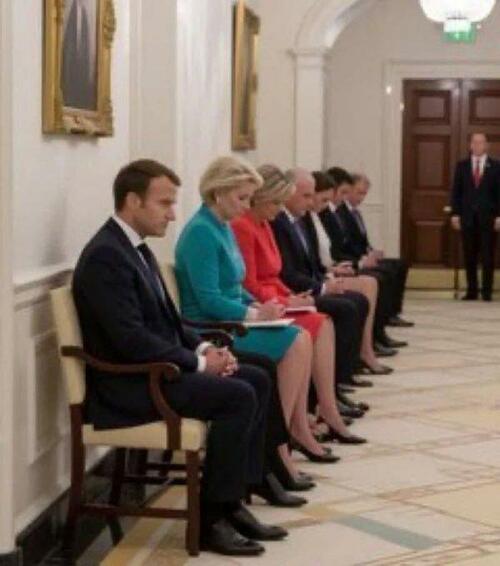
Fake but funny – AI can also be amusing – submissive European leaders wait to be dismissed by Trump – Source: Lucifer
The lack of intellectual understanding of the dangers that BRICS actually poses is also the reason why Trump sees China as a major adversary and fears that the Chinese are seeking to knock the US off its pedestal as the world's dominant power. For Trump, who prefers simple paradigms, this is easier to understand and communicate than the BRICS constellation, which the US population neither knows nor comprehends.
The Economic Situation in the US
If we are to believe the statements made by Jerome Powell, Chairman of the US Federal Reserve, at his last press conference on October 29, there is no cause for concern—at least that is how it sounds.
"the economy looks like it’s solid and stable and hasn’t really changed"
Transcript of Chair Powell’s Press Conference October 29, 2025
The term “looks like” already indicates that this whitewashing is built on sand.
Anyone who does not get his information from sources sponsored by banks and other financial organizations, such as CNBC and other mass media outlets that claim to be “experts,” but instead looks behind the scenes and occasionally visits ZeroHedge, is well aware of the pitiful financial situation of the US, or rather the Collective West. We described this catastrophe and its origins from a geopolitical perspective in our article “The war between two worlds has begun – Part 1.” It is not the purpose of our blog to analyze economic data; others are better at that. Nevertheless, today we would like to point out a phenomenon that is characteristic of our time.
AI – The Mother of All Bubbles?
Those who view American stock indices as a benchmark for the economy are still cheering, albeit more hoarsely than before, as the price bonanza is limited to fewer and fewer stocks and AI is not only the savior, but must be the savior in order to keep the dance around the golden calf alive. The drivers of the stocks – people who tie their careers to this hype – dismiss objections that question how the predicted huge investments on which the valuations are based can even be raised and how a business model can be created in which users are supposed to amortize these huge investments. Most users pay a few dollars to use these artificial brains – nothing more. It is also striking that gigantic investments are passed around in a circle – according to the motto: You send me 100 billion under the heading X and I send the money back under the heading Y: Total investments then amount to 200 billion, but nothing has been invested. Instead of many: New York Times.
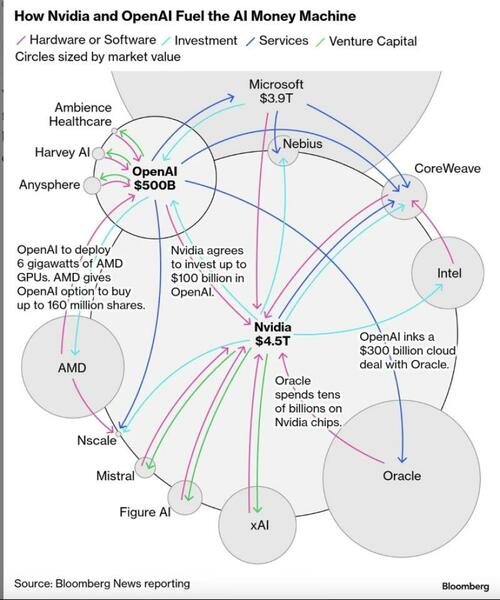
For those who want to have a laugh: Ronny Chieng explores the promises of AI
In 2000, there were companies listed on NASDAQ that had nothing to do with the internet, but added “.com” to their names and then saw their share prices jump by 500%. Something similar is happening again now. With these valuations, everyone can be sure that every pension fund in the Western world is invested in this bubble, because the big difference to the dot-com bubble is that back then, it was mainly high-earning doctors and lawyers who lost a lot of money when the bubble burst. Today, every pensioner is caught up in it.
According to the Swiss business newspaper Finanz & Wirtschaft, the current AI bubble (red) is almost twice as big—or rather, twice as bad—as the dot-com bubble of 2000.

Source: Finanz & Wirtschaft
No one knows when this bubble will burst, but it will burst, and this will lead to such upheavals on the financial markets that the geopolitical plans of the Collective West will be called into question.
How Ill-informed is Trump?
To what extent Trump is aware of the catastrophic situation facing his nation and the financial markets in the Collective West seems once again difficult to assess. Trump himself—as a real estate mogul—loves the leverage of credit, which has made him rich and has repeatedly ensured that it was not he personally but his lenders who had to write off billions. Trump therefore loves debt and low interest rates. On December 3, 2025, the New York Times wrote:
"Mr. Trump has made clear that he wants a Fed chair who will support substantially lower interest rates, something that the central bank under Mr. Powell’s leadership has rebuffed given the economic backdrop. Inflation has picked back up with Mr. Trump’s tariffs, while the labor market has shown signs of slowing."
Source: New York Times
He is therefore unaware that lower interest rates will not only harm the US dollar in the long term, but that he will soon find no buyers for this currency. This circumstance would further reinforce the aversion of the Global South to the US dollar described above, as the US dollar would be shunned not only for geopolitical reasons, but also for purely economic reasons.
A close friend of mine is acquainted with someone who regularly dines with Donald Trump at the Mar-a-Lago dinner club. The talkative president speaks freely about many topics at these private gatherings. A few days ago, for example, he said that the Russian economy was in ruins and that the Russians were suffering catastrophic losses. I am on the ground here and can confirm to our readers that both statements are simply false. This is not about assessing the Russian economy or the situation on the front lines, but this example shows that President Trump is being misinformed by his advisors. Whether this is intentional or due to the incompetence of his administration, I have no way of knowing, but it does make his many suboptimal decisions this year seem more comprehensible, and one can assume that the president, who believes in simple thought patterns, sees the insane rally of a few AI stocks as a sign of a healthy and resilient economy.
How Will Trump Deal with BRICS?
Short-term Solutions to Money Problems
We have established so far that Trump is extremely aggressive economically and also very ruthless toward friends and allies in order to achieve his goals. His most pressing short-term goal is easy to identify: money. In May, we published the article “Mar-a-Lago will fail—without credibility, nothing works anymore.” In it, we critically analyzed Trump's economic plans. We demonstrated that these plans are partly contradictory and will ultimately fail due to the greatest weakness of the US: Americans are completely unreliable partners and only honor contracts as long as they benefit from them, only to break them afterwards for the flimsiest of reasons. We have already commented on this weakness of the US several times, for example in June in “Diplomacy on its deathbed,” where we quoted Professor Mearsheimer as follows:
"Any country on the planet to trust the United States is remarkably foolish."
Professor Mearsheimer
Medium- and Long-Term Solutions – Weakening BRICS
To achieve its medium- and long-term goals, the US is employing other means. As we have already outlined in our series “The war between two worlds has already begun,” the Americans are avoiding direct military confrontation with China and Russia. With regard to Russia, we believe that the confrontation in Ukraine is a direct one—see our comments in the second part of this series, “Has World War III already begun?” However, the Americans disagree, and the Russians are letting the Americans believe this for diplomatic reasons.
The US can only maintain its status as a hegemon if it destroys BRICS as an organization or weakens it to such an extent that it becomes what the West describes it as: a failed or embarrassing attempt by a few developing countries to rise above insignificance. In doing so, they are taking action against BRICS members, partners, and candidates, using every means imaginable. They are courting them to get them to switch sides (e.g., Saudi Arabia), weakening or destroying them (e.g., Venezuela).
Below, we outline the pressure points divided into geographical catchment areas on which the Collective West has or intends to exert massive influence.
Catchment Area: Western Flank of Russia
Ukraine
Currently, the Collective West is working on Russia in Ukraine in the Western catchment area. For the origins, I refer to my lecture of March 22, 2024.
The West has been conducting military operations for almost four years with absolutely no success. The losses suffered by the Ukrainians are horrendous, and it looks as though it will be the Russians who determine where their future borders will lie. It is very possible that Russia will turn Ukraine into a landlocked country by capturing Odessa, partly because of the ongoing attacks on Russian ships in the Black Sea, which are probably coordinated from London. Professor Mearsheimer's argument on this subject is compelling (AI-generated).
It is also obvious that it is the Europeans who are torpedoing the US's peace efforts; the reasons for this are multi-layered:
Firstly, the leaders of the EU and the leaders of the coalition of the willing are acting as ministers of war, protecting Europe from the evil Russians.

A Muppet show for the Western press – Coalition of the Willing, May 10, 2025
The moment peace “breaks out,” these leaders will lose their raison d'être, as it will quickly become apparent that the clamor for war was not staged to protect the countries concerned or the EU, but to preserve the jobs of this caste.
Furthermore, it appears that it was not only the ladies and gentlemen in Kiev who helped themselves to the money flowing in from Washington, the EU, and European countries. The official figure cited in relation to corruption, around 100 million euros, is a drop in the ocean when viewed realistically. It can be assumed that between 40% and 60% of all funds have disappeared. We are therefore talking about a figure of up to 100 billion that has been stolen. Why much of the aid money had to flow through Estonia, for example, raises questions. Did Ms. Kaja Kallas, the spoiled girl, also have her hand in the till? She does have experience with sleazy scandals.

Has experience with sleaziness – Kaja Kallas
We will soon report on these unsavory stories, which have not yet been proven. If Zelensky's power passes to others, the chances of the ladies and gentlemen in Europe being convicted of corruption increase exponentially. Another reason for Europeans to continue the war.
Romania/Moldova/Transnistria
We have pointed out several times that Transnistria could well be drawn into this conflict, which would directly involve both Moldova and Romania. For more on this, see our article “Moldova – EU testing ground for political reprisals against non-Western forces.”
The Collective West achieved its goals in Romania and Moldova not through military means, but through NGOs and blatant election fraud. We discussed this in our article “Review of the parliamentary elections in Moldova.”
In Moldova and Transnistria, too, the West is provoking confrontation with Russian and Russian-speaking citizens and their culture in order to create the conditions for open confrontation with Russia.
Baltic States
The Baltic states are a particular focus. By demonizing large sections of their own population—Russians—and depriving them of their legitimate rights under EU law, attempts are being made to weaken Russia. These citizens, who are not citizens, are in fact called “non-citizens,” do not have EU passports, and their right to vote and stand for election is restricted. They are also only allowed to use their own language to a very limited extent; there is even a language police force, and Russian-speaking citizens have had to take language tests, failure of which can lead to expulsion from the country for pensioners living there. As a result, more than 800 pensioners living in Latvia with valid residence permits have been expelled from the country for these reasons, as the news portal News.ru credibly reports.
The information that Estonia intends to increase the fines for the incorrect use of language—meaning the use of the Russian language—to €1,280 for natural persons and €10,000 for legal entities also points in the same direction. The dubbing of films into Russian is now also to be banned in Estonia.
Estonia is the homeland of the EU's top diplomat, Kaja Kallas. Under normal circumstances, diplomacy also involves maintaining and developing cultural relations and preventing discrimination. Article 21 of the EU Charter states:
« 1. Any discrimination based on any ground such as sex, race, colour, ethnic or social origin, genetic features, language, religion or belief, political or any other opinion, membership of a national minority, property, birth, disability, age or sexual orientation shall be prohibited.»
EU-Charta Article 21
Have you heard any criticism of the Baltic states' treatment of their Russian-speaking citizens over the past 30 years? That's how long this violation of the law has been going on. In this respect, the Baltic states are on a par with the regime in Kiev.
Hungary/Slovakia
Hungary and Slovakia are the only EU countries striving for a non-aggressive relationship with Russia. This is due, among other things, to their continuing close economic ties with Russia. The Collective West is interfering massively in the internal affairs of Hungary and Slovakia via NGOs and direct pressure from the EU. In this way, attempts are being made to get rid of Prime Ministers Orban and Fico, if necessary by physical means. In Fico's case, this almost succeeded when an assassination attempt was made on him in Banska Bystrica on May 15, 2024.
Serbia
As a non-EU country completely surrounded by NATO countries, a landlocked country, the traditionally pro-Russian enclave is exposing itself to a significant extent in favor of Russia. The pressure is mounting. On the one hand, the country wants to become part of the EU, but on the other hand, there is considerable resistance to this in Serbia. Furthermore, Serbia's only refinery, which is majority-owned by Lukoil, has fallen victim to new American sanctions. Serbia has not yet found a solution, i.e., no buyer for Lukoil's stake. Russia was then given one and a half months to sell Lukoil's stake in order to have the US sanctions lifted.
In any case, this problem will lead to higher energy prices, which could cause unrest. Whether the West will succeed in turning Serbia into an enemy of Russia is uncertain and probably depends on whether Vucic finds a way to defend his policies and remain firmly in the saddle.
Catchment Area - Caucasus
Azerbaijan/Armenia
The two Caucasus states have been striving toward the West for several years. The reasons for Azerbaijan's efforts lie in its close alliance with Turkey, which in turn works very closely with Great Britain in the Caucasus. This is reflected in Azerbaijan's procurement of Western weapons for its conflict with Armenia. Furthermore, the country is Israel's main energy supplier, via Turkey. The energy sources (gas and oil) themselves are mostly under British control (BP). This also applies to other mineral resources (gold, copper, etc.). Azerbaijan is also a huge producer of fruit and vegetables. Russia remains the main buyer of these products. The fruit and vegetable trade in Russia is dominated by Azerbaijanis. Since Russia accounts for around 50 percent of the country's agricultural production, the political leadership must take this constellation into account, especially since well over 30 percent of the workforce is employed in this sector. Another factor to be taken into account is the large number of Azerbaijani migrants in Russia. For Russia, they fill a gap in the labor market, while for Azerbaijan, they fill the state coffers with their substantial remittances. These examples illustrate the complexity of mutual dependencies.
The illegitimate seizure of power by the current Prime Minister Pashinyan accelerated Armenia's shift away from Russia. As in the case of Azerbaijan, this trend does not reflect the opinion of the majority of the population, but rather the interests of a small segment of the political class. The latest step in this direction is Yerevan's announcement a few days ago that it will leave the Russia-led Collective Security Treaty Organization (CSTO), which includes Belarus, Kazakhstan, Kyrgyzstan, and Tajikistan in addition to Russia and Armenia. This step is also the logical consequence of the signing of an agreement with the US to regulate the situation on the Armenian-Azerbaijani-Iranian border following the loss of Nagorno-Karabakh after the war with Azerbaijan over this region.

The border strip between the Azerbaijani enclave of Nakhchivan and the Azerbaijani mainland on the Iranian border will in future be controlled by a private American military company. Armenia itself gains practically nothing from this. Azerbaijan gains American-controlled land access to its enclave and thus to Turkey and NATO.
For 100 years, the US will receive approximately 75 percent of all revenue from traffic volume and control of a key region on Iran's northern border. What was secretly established during the Israeli-Iranian war in June 2025—the complicity of Azerbaijan and Turkey in the attack on Iran—is hereby given a veneer of legality.
Kazakhstan
Kazakhstan is an extremely important strategic partner for Russia, and Russia is an extremely important strategic partner for Kazakhstan.

The land border is enormous (7,644 km) and the population density on both sides is low. It is therefore essential for both countries to have good relations, as it is impossible to guard such a long border. Both states are among the world's raw material giants. The Kazakh company Kazatomprom, for example, produces 40% of the world's uranium. Kazakhstan also produces natural gas, oil, coal, iron ore, etc. The list is almost as long as Russia's.
Politically speaking, Kazakhstan is performing a balancing act. On the one hand, the country is strategically important as a member of the CSTO, while on the other hand, as a member of the Organization of Turkic States and a Turkic-speaking country, it also plays a significant role in Turkey's strategic considerations. In addition to Kazakhstan and Turkey, this organization includes the post-Soviet states of Kyrgyzstan, Uzbekistan, and Azerbaijan. Hungary and Turkmenistan have observer status. And American experts recommend that only with the accession of Tajikistan and Armenia would the organization reach its full potential and strength.
Just a few days ago, Kazakh President Kassym Tokayev signed a memorandum of understanding in Washington on deepening cooperation with the US, particularly in the field of raw materials, before stopping off in Moscow on his return journey to sign a strategic partnership agreement with Russia.
The overlap between the strategic interests of the West on the one hand, Russia and China on the other, and the particular interests of Turkey and a number of other states is obvious.
Kazakhstan is a good example of how the Americans – through companies such as Halliburton – want to exert peaceful influence (for the time being). If this does not succeed, which we assume will be the case due to the pro-Russian sentiment of the population – Kazakhs speak Russian without any accent, as Russian is also an official language – the Americans will probably resort to more aggressive means. The reason for this is simple: a Kazakhstan under American control would be a dream for the US and hell for the Russians.
Our journey continues...
Tyler Durden
Mon, 12/08/2025 - 02:00


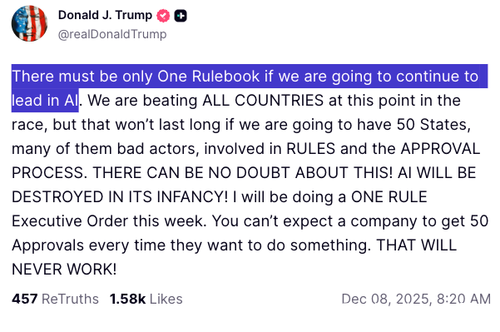
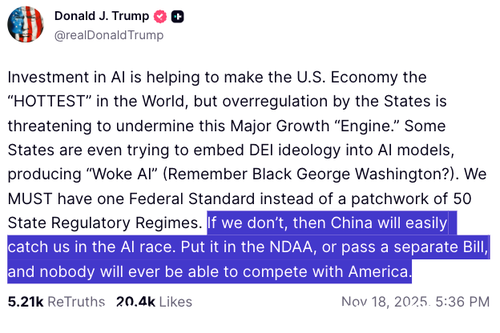

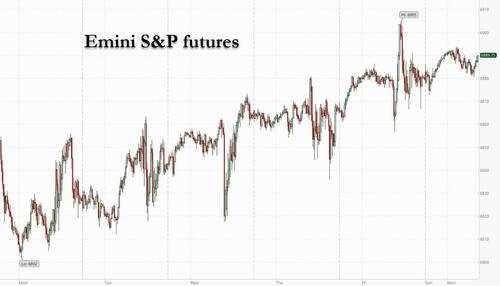



 Source:
Source: 

 US Army/NATO file image
US Army/NATO file image Source: Visual Capitalist
Source: Visual Capitalist
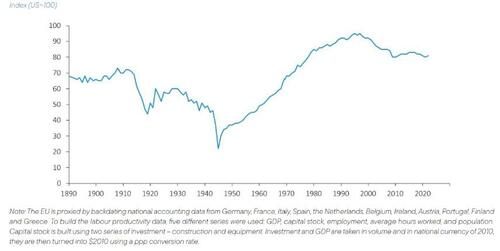
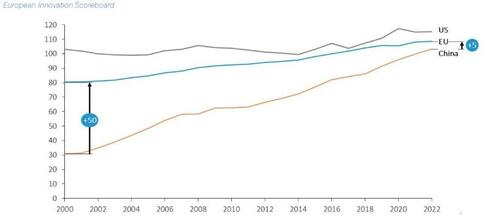
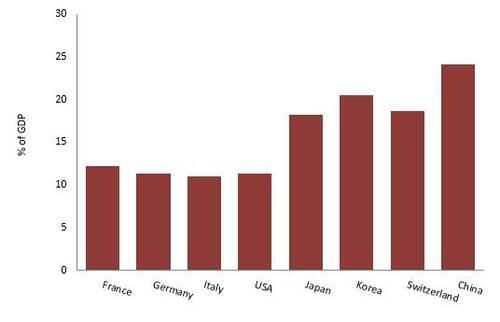










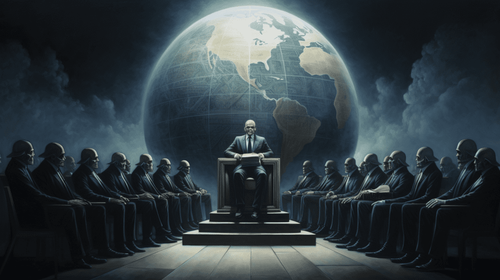



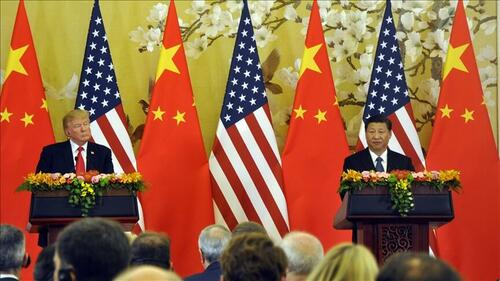 Via Anadolu Agency
Via Anadolu Agency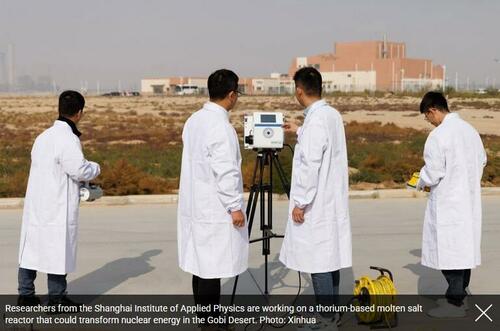

 J-15 carrier-based fighters, belonging to the air wing of the Chinese aircraft carrier Liaoning, were involved in the weekend incident. PLA file image
J-15 carrier-based fighters, belonging to the air wing of the Chinese aircraft carrier Liaoning, were involved in the weekend incident. PLA file image
Recent comments